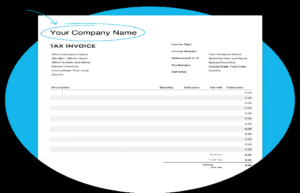
Why is it required to invest in multi-cap funds? An explanation
Every investment contains some degree of risk; even the most stable investments, such as blue-chip stocks or government bonds, might take a turn for the worst at any time. Therefore, a shrewd investor would always ensure that these risks are minimized to the greatest extent possible by meticulous preparation.
The first thing you should do to reduce your risk exposure is to diversify your investment portfolio. When markets are doing well, this is contrary to common sense. It is normal to be hesitant about investing a portion of your cash in assets that can seem to be doing nothing in particular. Nevertheless, any long-term investment strategy must include diversity as a primary focus.
Now, there are many ways in which you can ensure diversification. Multi-cap funds are a good option if you want to focus on equity funds. Let us learn more about multi-cap funds through this article.
Market capitalization and mutual funds
Investors who want to put their money into the stock market can put their money into large-cap funds, mid-cap funds, or small-cap funds, depending on the level of risk they are willing to take. Small-cap funds are often perceived as funds that seek aggressive returns but also have a larger risk linked to them. This is in contrast to large-cap funds, which are quite stable and appropriate for investors with a somewhat conservative to moderate risk profile. Having said that, it’s possible that an investor’s risk profile will change during the course of the investment cycle. As a result, it is essential for investors to ensure that their investment plan is adaptable and flexible to keep up with the ever-shifting risk profile. Because of their versatility, investors may consider incorporating multi-cap funds in their investment portfolio.
What are multip cap funds?
A fund that has the ability to invest across large-cap, mid-cap, and small-cap companies is referred to as a multi-cap fund. Investors are free to put their money into any company, regardless of its market capitalization. They are also free to put their money into any stock if they believe it is possible to provide greater returns for investors. These types of funds are often believed to be a combination of large-cap equities, as well as mid-cap and small-cap stocks
Why choose multi-cap funds?
Because the portfolio is not limited to a certain market capitalization, such funds can swiftly adapt to changing market conditions and take advantage of investment opportunities wherever they may be found. As a result, they have the potential to generate returns over the long term and throughout the market cycles. This is because the fund manager has the ability to swiftly make the shift from a large-cap-centered portfolio to a small-cap-dominated portfolio or vice versa, depending on the conditions of the market. As a result, they can generate returns over the long term.
Risks of multi-cap funds
Because it has at least 50% exposure to small and mid-cap equities, a Multicap Growth Fund is an ideal choice for diversification and long-term wealth generation; however, it can also be perilous in the short term. This is because small and mid-cap stocks are very risky in the short term. Due to the top restriction placed on market cap exposure, the ability of the fund manager to move allocation between different market cap equities based on their assessment of the market is likewise constrained.
Conclusion
Before adding a Multicap Fund to their portfolio, investors should first conduct a thorough analysis of their present investments in other mutual funds and their level of exposure to the different market cap categories. Those who have a timeframe of less than five to seven years or who have a poor tolerance for risk should not invest in multi-cap funds.


